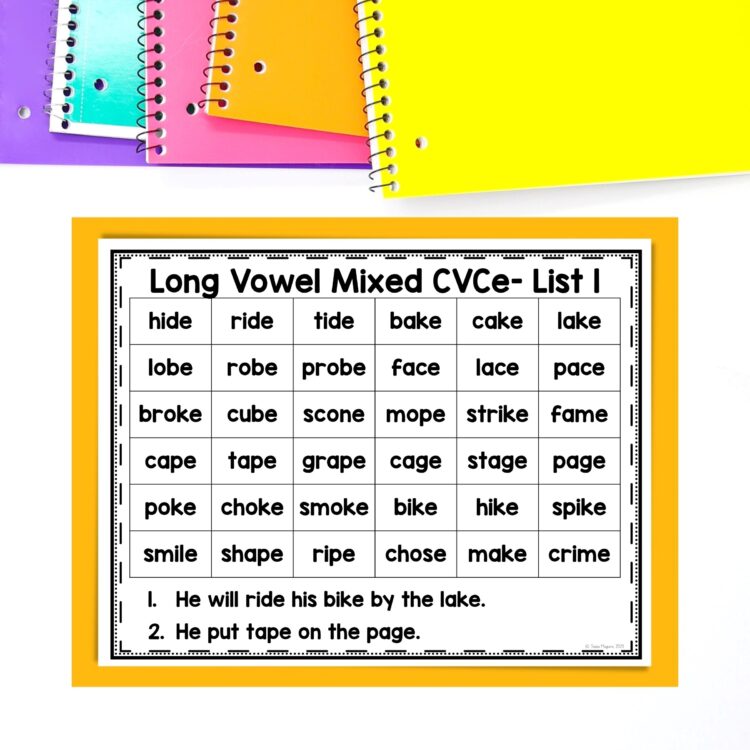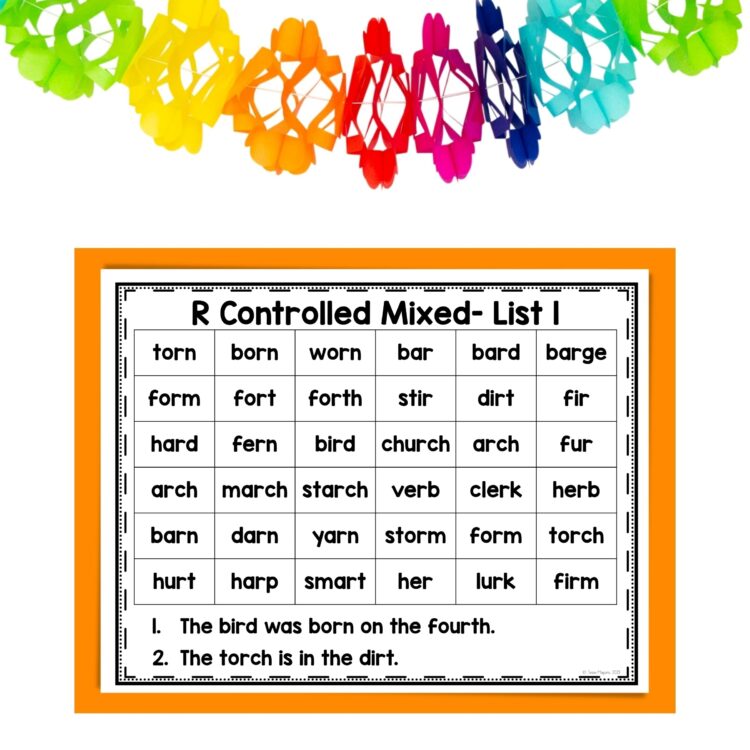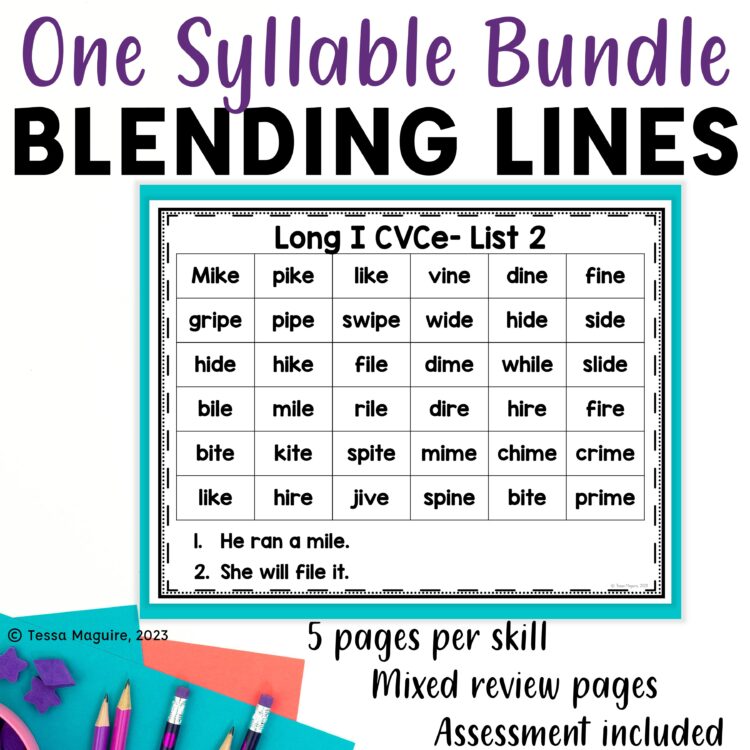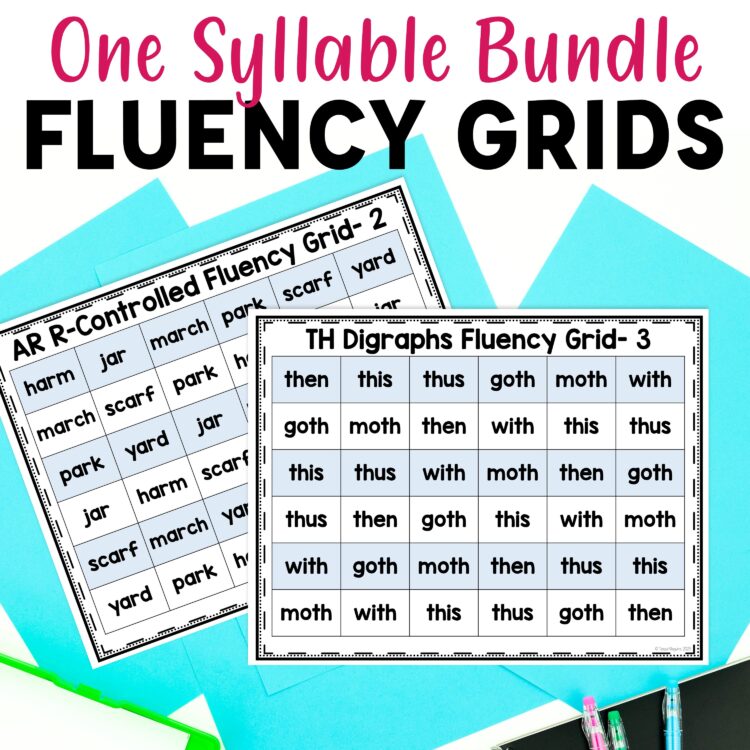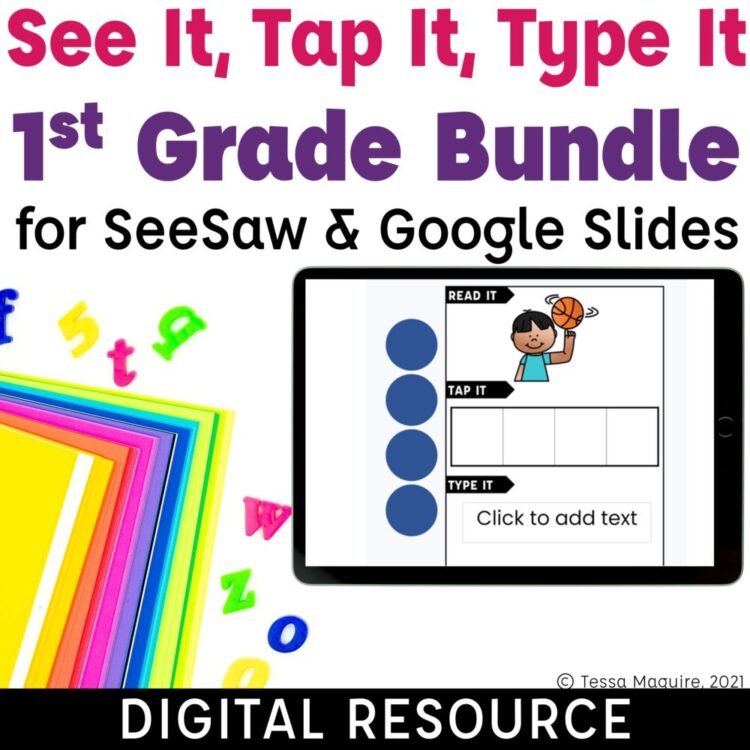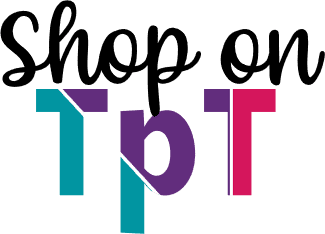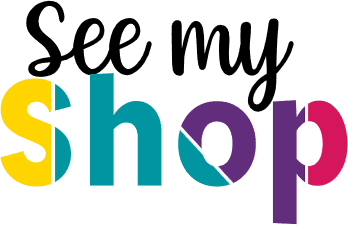© 2024 Tales from Outside the Classroom ● All Rights Reserved
How to Use Blending Lines and Decoding Drills in the Classroom
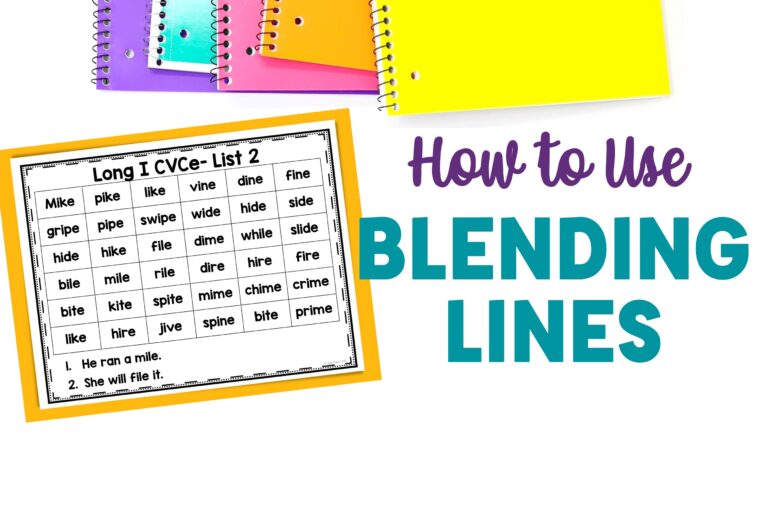
I first heard about blending lines in A Fresh Look at Phonics by Wiley Blevins. He recommends them as a tool to practice blending with your current phonics skill during whole class instruction. He incorporates intentional, continued review, frontloading of words students will have within decodable texts, and challenging words for more advanced readers. Because I use blending lines solely within my small group instruction, rather than during whole group instruction, I use them a bit differently. Here’s a look at what blending lines are, how to use them, and my specially created sets. I also talk a bit about decoding drills and how I use my blending lines as decoding drills during my small group instruction.
What are blending lines?
Blending lines are just what they sound like: lines of words that students use to practice blending. Essentially, they’re related groups of words that students use to practice a new phonics skill. They are best used after the lesson on the target skill but before students read their decodable book. Wiley Blevins suggests keeping the following things in mind when creating:
- Create them so they have minimal contrasts so students practice fully analyzing words
- Create them to provide formative assessment data
- Use them for differentiated practice to meet all students’ needs
- Create blending lines that also contain sentences of connected text
He suggests that blending lines progress from easier to more complex to provide differentiated practice. He also recommends that they be created with the words students are going to experience in their decodable texts in order to frontload them for students. In his book, Wiley Blevins gives several ideas for how to set them up by varying focuses on each line. In each example, there are lines with minimal contrasts by varying initial and final sounds only. He also includes mixed sets on the target skill, review words from previously learned skills, and connected texts. You can see a sample blending lines page for /ar/ on his publisher’s website. If you’re looking for more information on blending lines, or improving your phonics instruction, I highly recommend reading A Fresh Look at Phonics by Wiley Blevins. Please note: this is an Amazon affiliate link. This means I earn a small contribution from your purchase, at no cost to you.
What are decoding drills?
Decoding drills are typically sets of words that are used to practice decoding of a specific phonics skill. By repeatedly reading lists of words with a targeted skill, students build their oral reading fluency as common grapheme combinations become orthographically mapped in students’ brains. Decoding drills are often incorporated into small group routines to help build students’ fluency overall and with specific reading skills. I like to use my blending lines as decoding drills. Using blending lines we’ve already practiced with during previous days and weeks, I have students read the blending lines through twice, truly focusing on their fluency. This continued, repetitive practice feels comfortable for students since they’ve interacted with the words before, and helps build students’ confidence in reading.
How do you use blending lines?
Wiley Blevins gives the following reminders about implementing blending lines:
- Have students read the words chorally the first time through taking note of which words seem to be giving students difficulty
- Revisit the blending lines by pointing to random words and calling on students to read them (this is especially helpful for differentiating them during whole class practice)
- Use them for multiple days as a quick review and within small groups
- Make copies for students to take home as easy home support
- Do not spend more than 5 minutes on them. They should be a quick practice activity
Blending lines are intended to be a quick, targeted practice on the current phonics skill. They should not be laborious or overwhelming. Use them to practice decoding and cue students to be attentive to the whole words, but don’t spend all of your lesson time working on them. The bulk of your phonics time should be spent on applying phonics skills with connected, decodable text.
How do I implement them in my classroom?
As a third grade teacher, I don’t use blending lines during my whole group instruction. While we are revisiting typical phonics skills, my students are at a a range of abilities and the bulk of our whole group instruction is focused more on morphology than phonics. Instead, I use them within my small groups. I use them to practice and reinforce our current phonics skill and to revisit and continue to practice previously learned skills. I keep them organized by phonics skill and then use them as a quick practice during our small group instruction. My small groups are organized by phonics needs so it’s easy to incorporate them within our small group practice. Sometimes, I use them as a quick warm up before we do something comprehension focused. Other times, I use them during our specific phonics practice. Because they only take a few minutes, they’re a great warm up even when phonics isn’t the focus of that specific small group lesson.
My Blending Lines
Because I don’t use my blending lines for whole group instruction, rather for specific phonics-focused practice within my small groups, I created them a bit differently than is suggested. I also knew I was going to share them more widely, rather than just use them with my own students, so I created them with that in mind. A few specific revisions to Blevins’s guidance:
First, they do not include review or challenge words. Each page is focused on only that particular phonics skill. I like to use old ones as my periodic review, rather than incorporating it within the page. So much of our decodable text reading includes application of previous skills, as well, that I don’t find it highly necessary. Finally, I omitted review in order to ensure they match the sequence for anyone that may use them, where previous skills may differ. I also don’t include challenge words since I don’t use them with whole class instruction and don’t need to provide a further step for those kiddos.
Second, Wiley Blevins suggests that only high utility words be used in blending lines and they be used to frontload the words provided in decodable texts. I include some lesser utility words, and even nonsense words, in mine. I have had so many students over the years that I thought to be stronger readers (decoders) that really had built a bank of words in their memory. When presented with an unknown word, these students often struggled. I like to incorporate lesser utility words to glean students’ true abilities.
What is included?
I currently offer a One Syllable Words Blending Lines Bundle. I am working on creating additional sets for more complex phonics skills that will be added. I currently offer
Consonant Blends Blending Lines
NG & NK Glued Sounds Blending Lines
Each set is broken down into targeted practice based on that particular skill, and then also includes review within the set. For example, CVC words are broken down by vowel sound; and digraphs are broken down by individual digraphs. These mixed review pages are perfect for continued review once you have moved on to a new phonics skill. Each target skill includes the following within each blending lines set:
-
- 4 pages of blending lines with real words
- 1 page of blending lines with nonsense words
- 1 student-facing assessment page
- 1 assessment recording sheet
Each page is designed with patterns in sets of 2 or 3 words at a time within the first 2 lines. These intentionally similar, but varied, words focus student attention on the change between words and promote orthographic mapping. Because of the minimal contrasts between words, students focus on the subtle phonemic differences in words, which can improve their ability to recognize and produce the phonemes when reading later. These visually similar words also help build students’ phonemic awareness, which can lead to better reading skills overall. The third line is always a mix of words with the target skill so students practice the skill without the similar patterns initially practiced. The pattern repeats for lines 4-6 to give students practice with another set of words. Finally, two lines of decodable, connected text are included for student application (with the exception of the nonsense word page).
A set of nonsense words is included for intentional practice for those students that need additional reinforcement to slow down and be attentive to the letters. While I don’t promote frequent practice with nonsense words, I have found their use helpful with specific kiddos. For that reason, I do include a nonsense word page.
There is also an assessment with each target skill. The assessment does not follow the same pattern as the blending lines pages so that you are able to truly assess students’ decoding abilities. The assessment includes 3 lines of real words and 3 lines of nonsense words, in addition to reading decodable sentences. These quick check assessments provide formative information to help guide your instruction. Are students stronger when reading the sentences with context? Do students struggle with only the nonsense words? The variety of presentation helps identify students’ strengths and weaknesses.
Tracking your Students’ Phonics Progress?
Looking to keep track of your students’ performance each week? Take a look at my free phonics data tracker. It’s currently set up with a phonics sequence based on an assessment but can easily be tweaked to track your students’ progress with the included quick check formative assessments. Take a closer look at my Free Phonics Data Tracker Spreadsheet or just fill out the form below to have it sent straight to you! I’ve also included a video tutorial that walks you through how to use it and update it for anything you need- including to track assessment data as you wrap up each skill!
SEND IT TO MY INBOX!
Submitting this form will send the tracking sheet and video tutorial straight to your inbox! I will also send you some information on early literacy as time goes on.
Next step: Confirm!
You should have received an email to confirm your settings. If you don’t see the email right away, search Tales from Outside the Classroom. Then be sure to mark me as a safe sender so you find every email right away!
Once you confirm, the email with your tracking sheet and video tutorial will be on its way!
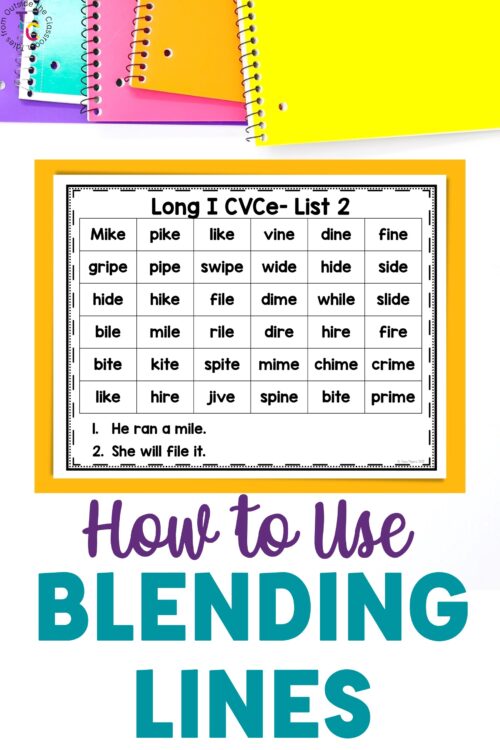
Newsletter Sign Up
Signup for my weekly-ish newsletter. I send out exclusive freebies, tips and strategies for your classroom, and more!
Please Read!
You have successfully joined our subscriber list. Please look in your e-mail and spam folder for Tales from Outside the Classroom. Often, the confirmation email gets overlooked and you're night signed up until you confirm!

Hi! I’m Tessa!
I’ve spent the last 15 years teaching in 1st, 2nd, and 3rd grades, and working beside elementary classrooms as an instructional coach and resource support. I’m passionate about math, literacy, and finding ways to make teachers’ days easier. I share from my experiences both in and out of the elementary classroom. Read more About Me.









